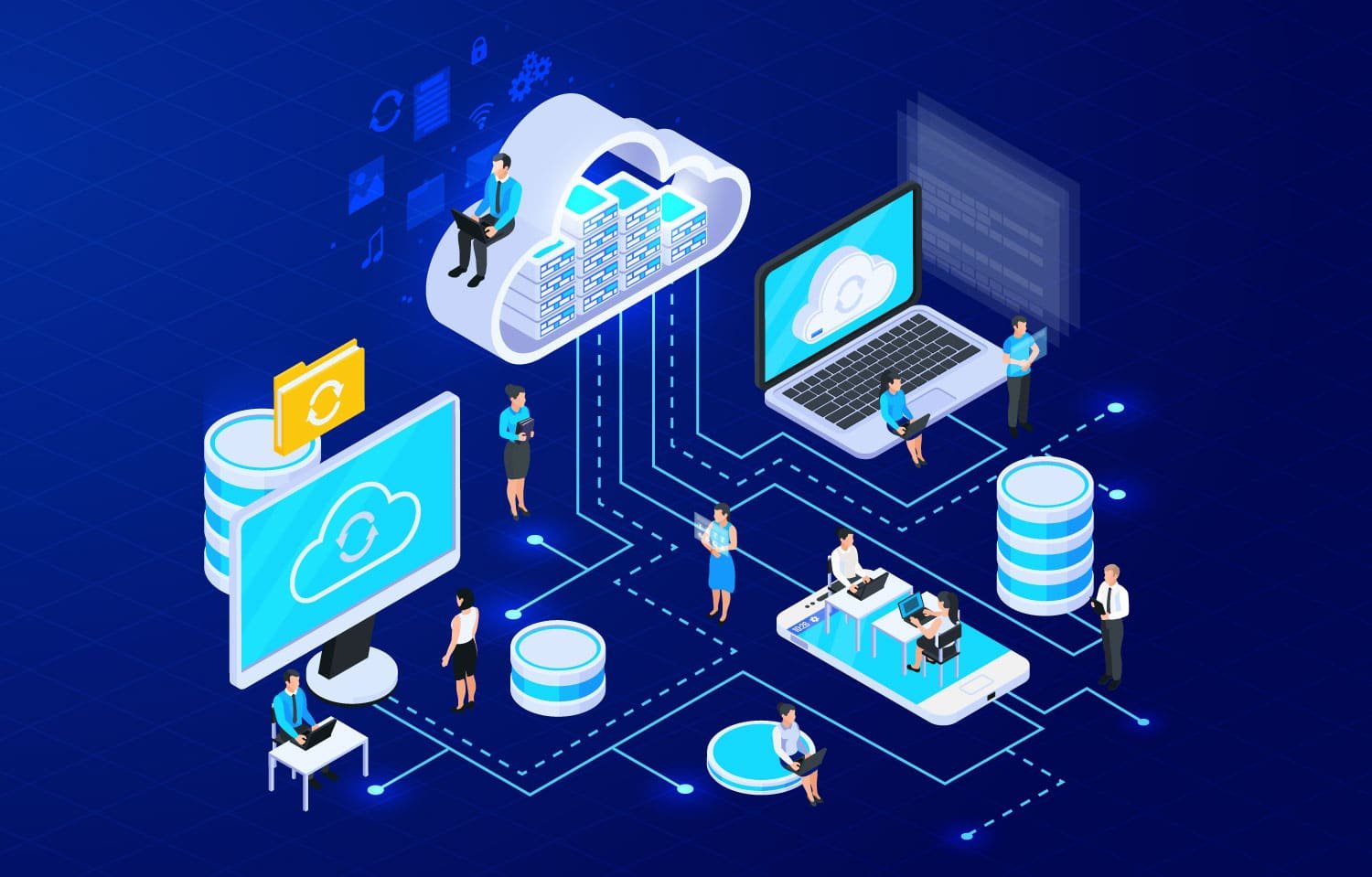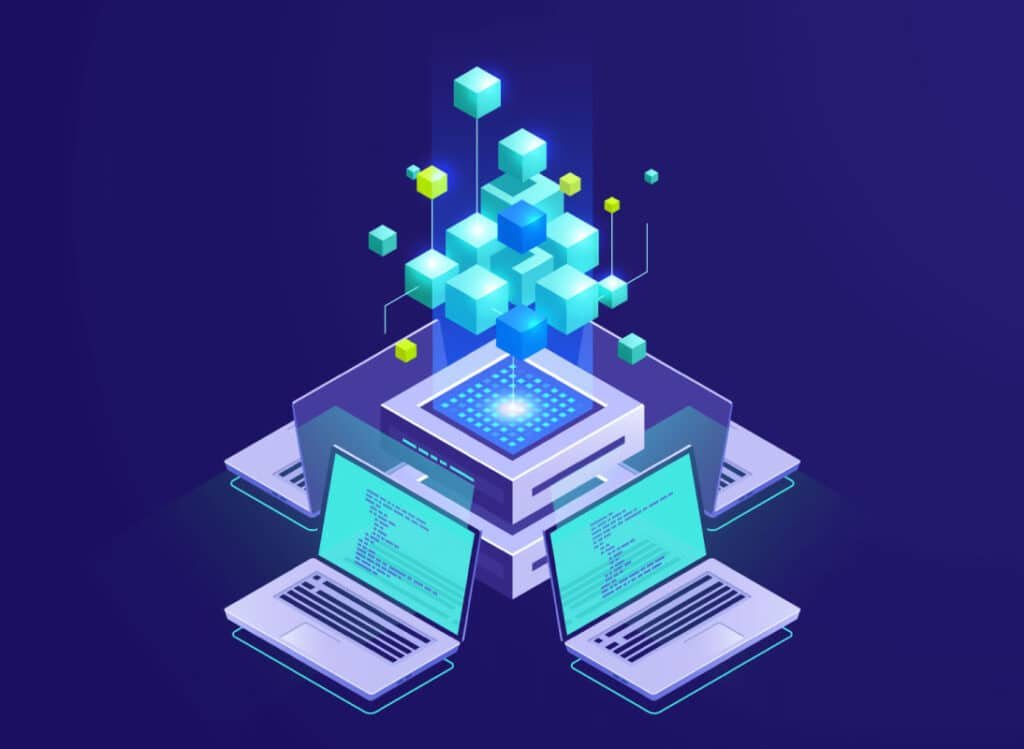What is FaaS (Function-as-a-Service)?

If you want to navigate the cloud jungle, you’ll quickly run into a whole bunch of acronyms: SaaS, PaaS, iPaaS – and then there’s FaaS. While the first few are well established, Function as a Service is still something of an underdog. But that’s a shame, because the serverless model comes with some compelling advantages. Time to take a closer look.
The meaning behind FaaS
Function-as-a-Service (FaaS) is a cloud-native computing model that allows developers to run individual functions or code snippets in a fully managed, serverless environment.
Instead of managing servers, infrastructure, or scaling logic, FaaS enables teams to focus entirely on writing and deploying code. The FaaS provider takes care of operational tasks such as provisioning, maintenance, monitoring, and automatic scaling. This approach not only accelerates development cycles but also ensures high availability, flexibility, and optimized resource usage.
This service modell is ideal for event-driven applications and microservices, offering a cost-effective, scalable solution that aligns perfectly with modern DevOps and cloud-first strategies.
How does FaaS work?
Function-as-a-Service allows you to deploy individual functions to the cloud, where they automatically execute in response to events (like an API call), scale on demand, and only incur costs when running. The main steps in building it include:
- Write Code: Develop small, single-purpose functions that handle specific tasks, typically triggered by an event (e.g. HTTP request, file upload, database update). Coding languages like Python, JavaScript, or Go are mostly used.
- Deploy: Copy your code to a FaaS platform, which automatically provides the infrastructure and is ready to be executed on demand.
- Define Triggers: An event triggers the function. This could be a user request, a message from a queue, a webhook, or any predefined condition. You need to make your choice.
- Execute: This platform instantly provisions the necessary resources to execute the function, once triggered. It scales automatically based on demand, handling 1 or 1,000,000 requests without manual intervention.
- Pay-per-Use: You only pay for the compute time the function actually uses. No charges for idle infrastructure or operational tasks, making FaaS highly cost-efficient.
Example: An online store can leverage FaaS to instantly process orders, update inventory, and send confirmation emails — all triggering functions — ensuring fast, reliable, and customer-centric operations that drive value for both the business and its customers.
What are the benefits of FaaS?
1. Cost efficiency
- Pay-per-use model ensures you’re only charged for actual compute time, reducing overhead and eliminating idle costs.
- No need for overprovisioning — resources scale automatically with demand, avoiding unnecessary infrastructure spend.
- Optimized resource allocation helps reduce Total Cost of Ownership (TCO) for IT operations.
2. Developer focused
- Abstracts infrastructure management, freeing developers from server setup, patching, and scaling tasks.
- Supports modular, single-purpose functions, encouraging clean, maintainable, and testable code.
- Integrates seamlessly with DevOps pipelines, enabling continuous deployment and automation.
3. Time to market
- Rapid deployment of functions allows for faster release cycles and quicker delivery of new features.
- Minimal setup requirements accelerate development without the need to configure complex environments.
- Built-in integrations and triggers streamline workflow creation for real-time business needs.
4. High availability and reliability
- Cloud-managed environments ensure uptime with built-in fault tolerance and redundancy.
- Automatic scaling maintains performance even under sudden spikes or heavy usage.
- Availability through distributed cloud infrastructure supports consistent service delivery at any time.
What are common use cases for FaaS?
FaaS is ideal whenever companies need flexible, scalable services. Common examples for common workloads include stream processing, image or text analysis, automated backups, notification services, and workflow automation. It also plays a crucial role in IoT and e-commerce, for instance in personalized content delivery.
On Black Friday, for example, e-commerce traffic multiplies within minutes. With FaaS, the serverless function layer automatically scales from a few hundred to tens of thousands of function calls per minute without the need to plan additional infrastructure. Events from API gateways, webhooks, or queues trigger stateless tasks. These include price and availability checks, checkout validation, personalized recommendations, and fraud checks.
Caching, idempotency, and pre–provisioned capacity minimize cold starts and latency. Once the load drops after the action, capacity falls back to zero. Billing remains pay–per–use, which significantly reduces costs compared to continuous operation. FaaS shows its strength when companies need short–term scaling and fast time–to–market.
What is the difference between FaaS and SaaS?
FaaS and SaaS represent two very different computing models. With SaaS, a complete application is delivered as a service. Examples include CRM systems or collaboration solutions that organizations can use instantly. FaaS, by contrast, is not about providing a finished application, but about enabling developers to deliver specific functions as part of a solution.
This means FaaS is more closely tied to development and integration, while SaaS is focused on immediate use of ready-made services. Compared to SaaS, FaaS requires more customization, but also offers far greater flexibility in tailoring tasks to a company’s existing systems and infrastructure.
How to manage the security of functions deployed on FaaS?
Security in a FaaS environment depends heavily on proper management and configuration. Since functions run within a shared cloud infrastructure, enterprises must apply strict role-based access controls, ensure encrypted data flows, and separate sensitive tasks carefully.
Modern providers offer advanced tools to continuously monitor deployed functions, automatically detect vulnerabilities, and enforce compliance. With these measures, organizations can make sure that even in a serverless system, the highest security standards are met.
How can FaaS be integrated into existing IT infrastructures?
Integrating FaaS into existing systems is most effective when the architecture is already aligned with microservices and cloud deployment. FaaS can be introduced as an additional layer that takes over specific tasks without requiring a complete system overhaul. Through APIs and event triggers, existing applications can be extended with serverless functions. The result is a hybrid solution where traditional servers and serverless services work side by side.
For enterprises, this means they can continue leveraging their current infrastructure while gaining the agility and efficiency of FaaS.
How to choose the best FaaS platform for your project?
Selecting the right FaaS platform depends on your project goals and your existing infrastructure. Important criteria include integration with current systems, available services, API support, and pricing models. If your organization already relies on IaaS or PaaS, it’s essential to assess how well the FaaS provider complements that environment. Features such as monitoring, automated scaling, and built-in security should also be evaluated.
Ultimately, the best solution is one that remains flexible, integrates seamlessly, and delivers the expected results.
Why FaaS is the future
Function-as-a-Service (FaaS) is the future of cloud computing, offering unmatched cost efficiency, faster time to market, and a developer-friendly approach. By abstracting infrastructure management and enabling event-driven execution, it empowers teams to focus on innovation while the platform handles scalability and reliability.
Ideal for modern, cloud-native architectures, it supports agile development, reduces operational overhead, and ensures high availability. As businesses demand faster, smarter, and more flexible digital solutions, FaaS provides the foundation for scalable, responsive, and future-ready applications, making it a key driver of digital transformation.
With cnips’ FaaS, you benefit from high scalability, cost efficiency, and seamless integration — making it ideal for businesses of all sizes. More than just a trend, FaaS represents a strategic shift in how we build, run, and scale software. It enables faster innovation, operational efficiency, and digital resilience, positioning your business to thrive in today’s dynamic, cloud-first world
Get to know more about the FaaS-Feature of cnips!
Do you have further questions about cnips and what it can do for your company? Get in touch with us. Our cnips experts are happy to help!

